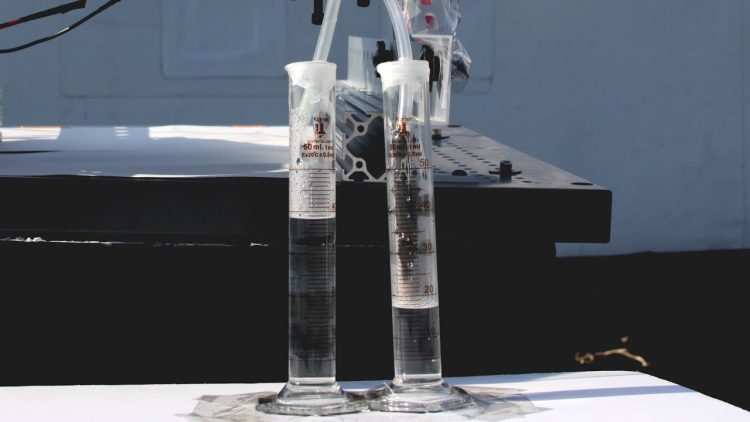Access to clean, fresh water is one of the most critical challenges facing humanity today. With millions of people around the world still lacking reliable access to safe drinking water, innovative technologies that could transform air into clean water are increasingly drawing attention. While the concept may sound like something out of science fiction, advances in atmospheric water generation (AWG) are making it more feasible than ever before.
In this article, we explore how new technologies are making it possible to extract clean water from the air, the scientific principles behind these methods, the challenges involved, and the future potential of this breakthrough in addressing the global water crisis.
1. The Science Behind Atmospheric Water Generation
At the heart of atmospheric water generation is the process of condensation. This occurs when water vapor in the air cools down and transforms into liquid water. The natural world has been utilizing this principle for millions of years—just think of how dew forms on the grass during the early morning.
However, turning this process into a reliable and scalable solution to produce clean water has been a monumental challenge. Water vapor is a complex substance, with its presence in the air varying greatly depending on location, time of year, temperature, and humidity levels.
The primary methods for capturing water from the air can be divided into three main categories:
1.1. Condensation-Based Technologies
These systems work by cooling the air to a temperature below its dew point, causing the moisture in the air to condense into water droplets. The cooled air is then passed through a filtration system to remove any impurities, ensuring the water is clean and drinkable.
The most well-known example of condensation-based technology is the atmospheric water generator (AWG) systems used in various regions with limited freshwater resources. These devices typically use refrigerant-based cooling cycles or thermoelectric cooling methods to cool the air and extract moisture. The condensed water is collected and filtered to remove contaminants before being stored in a tank for use.
1.2. Hygroscopic Materials
Another innovative approach involves the use of hygroscopic materials—substances that can absorb moisture from the air. These materials, often salts or other compounds, are capable of absorbing large amounts of water vapor when the humidity is high. Once the material has absorbed enough moisture, it can be heated to release the captured water in liquid form. This method is being explored by companies and research institutions as a way to produce water from air in arid conditions where traditional condensation methods might not be as effective.
One promising material for this technology is a specially designed metal-organic framework (MOF) that is highly effective at absorbing moisture. Scientists are working on enhancing the efficiency of these materials to capture and release water in a sustainable and energy-efficient way.
1.3. Solar-Powered Water Harvesting
Solar energy can also play a crucial role in water generation from the atmosphere. Solar-powered water harvesters use energy from the sun to drive the condensation process. These systems can work in a variety of climates, even in regions where traditional methods of cooling the air might not be feasible.
A notable example of this technology is the “solar still,” a device that mimics the natural water cycle. In a solar still, water evaporates from the ground or a container, condenses on a transparent surface, and is collected as clean water. These devices have become an affordable and low-energy solution for producing water in remote or off-grid locations.
In recent years, researchers have developed advanced solar stills with materials that increase condensation efficiency and reduce energy consumption. By combining solar energy with innovative materials such as hydrogels, researchers are hoping to create even more efficient devices for atmospheric water generation.

2. Technological Advancements Driving Water Generation
While the science of extracting water from the air is not new, recent technological advancements are enabling the development of more efficient, scalable, and affordable systems. Several key innovations are driving progress in this field:
2.1. High-Efficiency Condensation Systems
One of the biggest challenges in atmospheric water generation is maximizing the amount of water that can be extracted from the air. Traditional condensation-based systems require significant energy input to cool large volumes of air, which can be inefficient in energy-scarce environments.
To address this, scientists have been exploring new materials and cooling methods. For example, recent advances in thermoelectric materials, which convert heat into electricity, have led to more energy-efficient condensation systems. These materials are able to cool the air without the need for refrigerants, which are often harmful to the environment.
Additionally, researchers are experimenting with advanced heat exchangers and phase-change materials that can absorb and release heat more effectively, allowing for greater water collection with less energy expenditure.
2.2. Machine Learning and AI Integration
In recent years, machine learning and artificial intelligence (AI) have begun to play a role in optimizing atmospheric water generation systems. By analyzing weather patterns, humidity levels, and other environmental factors, AI can predict the most efficient times and methods for harvesting water. This can improve the performance of AWG systems, especially in areas with fluctuating humidity levels.
Machine learning can also help optimize the energy consumption of these systems by adjusting cooling processes based on real-time data. As these technologies continue to evolve, we may see highly automated water generation systems capable of operating autonomously in remote regions with minimal human intervention.
2.3. Sustainable and Scalable Solutions
For atmospheric water generation to make a meaningful impact on global water shortages, the technology must be both sustainable and scalable. This means that it needs to be energy-efficient, cost-effective, and able to operate in diverse climates. Many of the most promising advancements in AWG are focused on improving these aspects.
For example, solar-powered AWG systems are gaining traction as a way to make water harvesting more sustainable. By harnessing the power of the sun, these systems can produce clean water without relying on fossil fuels. Additionally, advancements in energy storage, such as efficient battery technologies, are helping to make these systems more reliable and independent of grid power.
3. Addressing Global Water Scarcity with Atmospheric Water Generation
The potential of atmospheric water generation to alleviate global water scarcity is immense. Approximately 2.2 billion people worldwide lack access to safely managed drinking water, and many regions, particularly in the Global South, are experiencing chronic water shortages. AWG technologies could provide a reliable and sustainable source of clean water, particularly in areas with high humidity but limited freshwater resources.
3.1. Applications in Arid Regions
One of the most promising applications for AWG technology is in arid and semi-arid regions where conventional water infrastructure is limited or non-existent. For example, countries in the Middle East and North Africa (MENA) region, which have some of the world’s lowest levels of freshwater availability, are exploring AWG as a potential solution.
In such regions, the air may be dry, but it still contains significant moisture—especially at night when temperatures drop and humidity levels increase. By leveraging this atmospheric moisture, AWG systems could help provide drinking water to communities that would otherwise rely on expensive and energy-intensive desalination plants.
3.2. Disaster Relief and Emergency Situations
AWG technology has also shown great promise in disaster relief situations. Following natural disasters, such as hurricanes or earthquakes, access to clean water is often one of the first and most urgent needs. AWG systems could be deployed quickly to provide drinking water to affected populations, reducing dependence on bottled water or water transportation logistics.
3.3. Rural and Off-Grid Communities
In many rural or remote areas, the infrastructure for piped water is either too expensive or non-existent. AWG technology could provide a decentralized solution, allowing these communities to generate their own water on-site. Solar-powered AWG systems, for example, could operate independently of the national power grid, making them a viable option for off-grid communities.
4. Challenges and Limitations
While the potential of atmospheric water generation is immense, there are still several challenges and limitations to overcome before it can be deployed at a large scale.

4.1. Energy Consumption
One of the most significant hurdles facing AWG technologies is energy consumption. Condensation-based systems, in particular, require a lot of energy to cool the air to the point where water can condense. While solar-powered systems offer a solution, they may not be efficient enough to meet the needs of large populations or industrial-scale water production.
Researchers are working on improving the energy efficiency of these systems by exploring new materials and cooling methods. However, until these technologies become more efficient, the energy requirements for AWG may still limit its widespread adoption.
4.2. Water Quality
Another concern is the quality of the water produced by AWG systems. While condensation-based systems can remove many of the contaminants present in the air, there may still be impurities in the collected water that require further filtration. Additionally, systems that rely on hygroscopic materials or solar stills may need more advanced purification processes to ensure that the water is safe for consumption.
Ensuring high water quality will be a key challenge in scaling AWG technologies to serve large populations. Advanced filtration and purification technologies will be essential to meet safety standards for drinking water.
4.3. Cost and Scalability
Currently, the cost of AWG systems remains relatively high, especially for larger-scale operations. While costs are expected to decrease as the technology matures, it may still be prohibitively expensive for many developing countries or regions with limited resources.
Additionally, scaling AWG technologies to meet the water needs of entire populations will require significant investment in infrastructure and distribution systems. This presents a challenge for governments and organizations seeking to implement these solutions in areas with inadequate infrastructure.
5. The Future of Atmospheric Water Generation
The future of atmospheric water generation looks promising. As technological advancements continue to improve efficiency, reduce costs, and increase scalability, AWG systems could play a vital role in solving the global water crisis. By harnessing the moisture already present in the atmosphere, we can unlock a new source of clean, renewable water that has the potential to benefit millions of people.
As governments, private companies, and research institutions continue to invest in AWG technology, we can expect to see more innovative solutions that address the challenges of water scarcity and climate change.











































